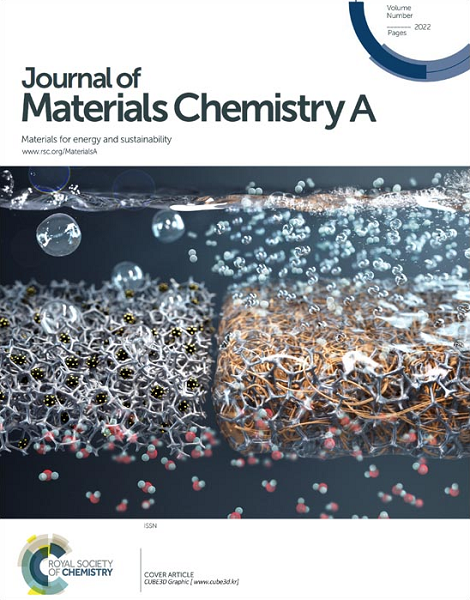Prediction of High Photoconversion Efficiency and Photocatalytic Water Splitting in Vertically Stacked TMD Heterojunctions MX₂/WS₂ and MX₂/MoSe₂ (M = Cr, Mo, W; X= S, Se, Te)
IF 10.7
2区 材料科学
Q1 CHEMISTRY, PHYSICAL
引用次数: 0
Abstract
Based on two-dimensional (2D) transition metal dichalcogenides (TMDs) exhibiting strong light-matter interactions and spin-valley locking properties, we construct two types of MX2/WS2 and MX2/MoSe2 (M=Cr, Mo, W, and X=S, Se, Te) heterojunctions to investigate their electronic and optical properties based on first-principles calculations. The calculated results indicate that eight heterojunctions are semiconductors with staggered gaps, which are beneficial for prolonging the lifetime of excitons and promoting the efficient separation of photogenerated electrons and holes. The absorption coefficients of these heterojunctions reach the order of 105 cm-1 in the visible range, especially the MX2/MoSe2 heterojunctions. Among the considered heterojunctions, MoS2/WS2, MoSe2/WS2, WSe2/WS2, and WSe2/MoSe2 heterojunctions exhibit suitable band gaps and high carrier mobility, indicating promising potential for photocatalysis. Meanwhile, a promising water splitting photocatalyst WSe2/MoSe2 is predicted successfully by analyzing the corresponding photocatalytic water splitting properties. More importantly, the photoconversion efficiency (PCE) of the MoTe2/MoSe2 heterojunction is as high as 25.84%, which has a larger value compared to the PCE of the OsNCl/FeNCl heterojunction (23.45%) reported recently. These findings provide theoretical evidence and identify excellent candidate materials for the advancement of optoelectronics and photocatalysis.求助全文
约1分钟内获得全文
求助全文
来源期刊

Journal of Materials Chemistry A
CHEMISTRY, PHYSICAL-ENERGY & FUELS
CiteScore
19.50
自引率
5.00%
发文量
1892
审稿时长
1.5 months
期刊介绍:
The Journal of Materials Chemistry A, B & C covers a wide range of high-quality studies in the field of materials chemistry, with each section focusing on specific applications of the materials studied. Journal of Materials Chemistry A emphasizes applications in energy and sustainability, including topics such as artificial photosynthesis, batteries, and fuel cells. Journal of Materials Chemistry B focuses on applications in biology and medicine, while Journal of Materials Chemistry C covers applications in optical, magnetic, and electronic devices. Example topic areas within the scope of Journal of Materials Chemistry A include catalysis, green/sustainable materials, sensors, and water treatment, among others.
 求助内容:
求助内容: 应助结果提醒方式:
应助结果提醒方式:


